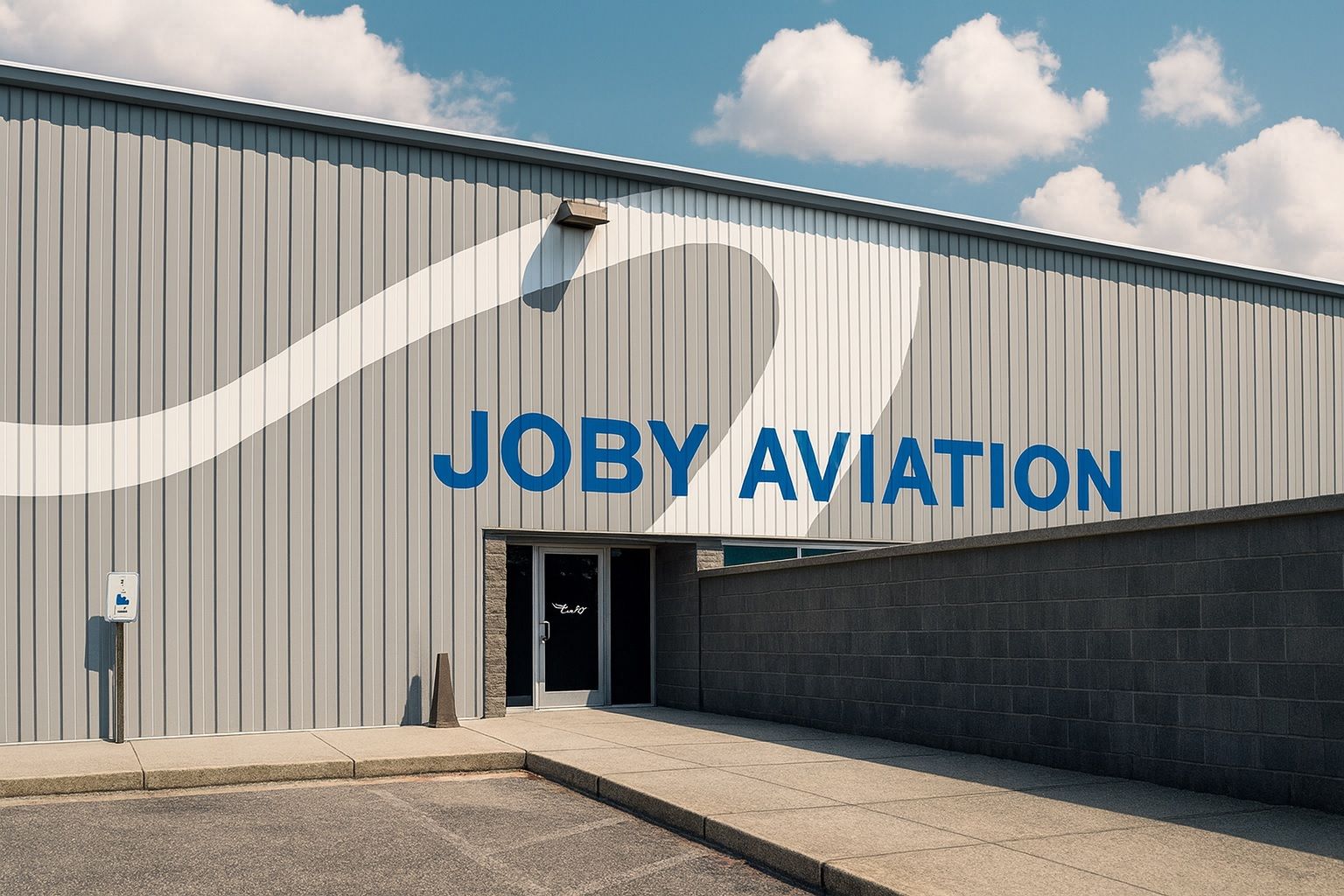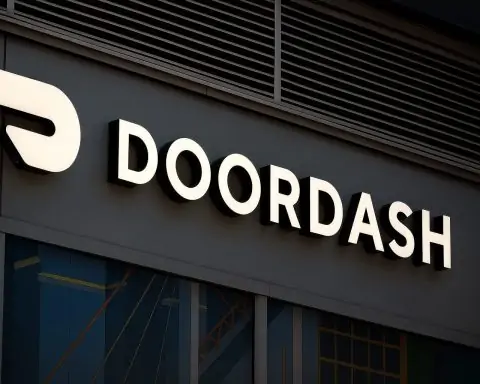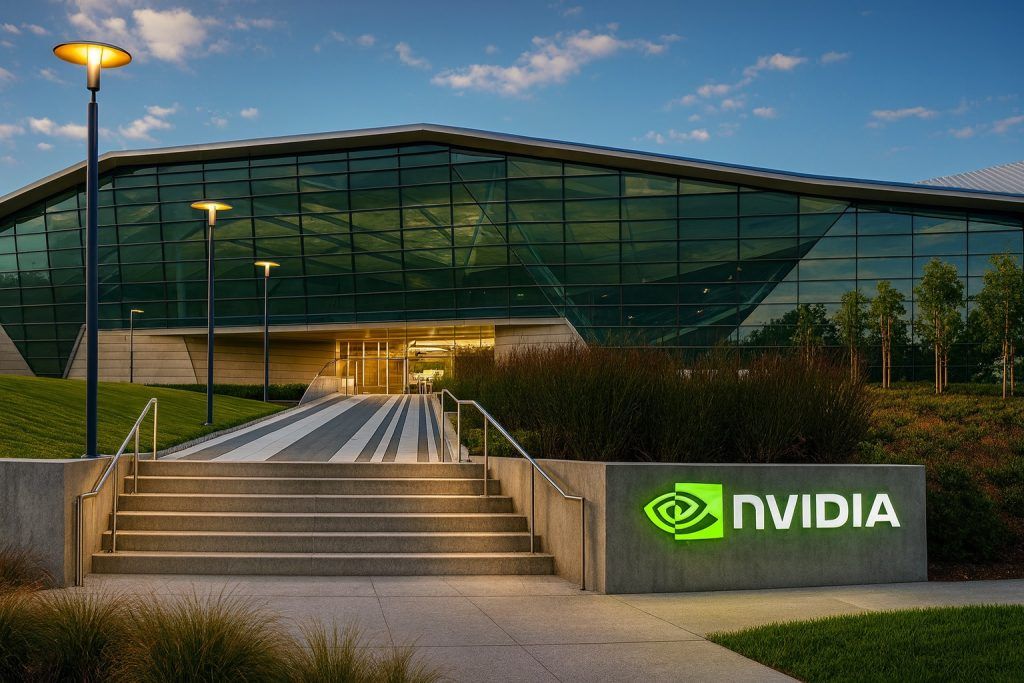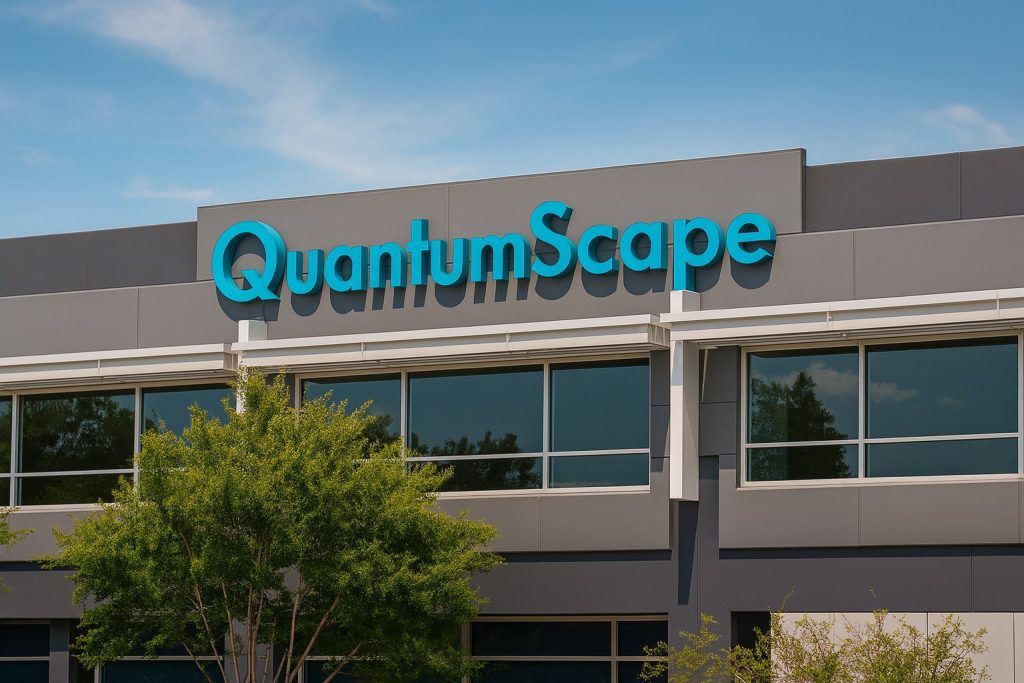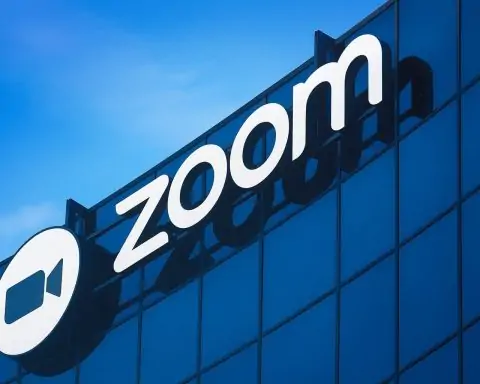- $500M Share Sale Sparks Drop: Joby Aviation announced an underwritten public offering of $500 million in common stock (30.5 million shares at $16.85 each) with an extra $75 million option for underwriters [1]. The news triggered a ~9% after-hours stock drop to around $17.24 per share on Oct. 7 amid dilution fears [2] [3]. Shares opened Oct. 8 down ~9% from the prior close.
- Funding Growth vs. Dilution:Joby plans to use the proceeds to fund FAA certification, ramp up manufacturing, and launch commercial operations for its electric air taxis [4]. The cash infusion adds to Joby’s ~$991 million mid-2025 cash pile [5], extending its runway to 2026–27. However, it will dilute existing shareholders by roughly 15–20% [6] [7], raising investor concerns even as some institutions increased their stakes, signaling long-term confidence [8].
- Stock Tripled on eVTOL Hype: Before the offering, Joby’s stock had more than tripled in the past year, climbing from about $5 last fall to recent highs near $20 [9]. As of early October, shares were in the high teens (~$18) after a 234% year-to-date gain fueled by positive news on partnerships and regulatory progress [10]. This rally far outpaced Wall Street expectations – analysts’ average 12-month price target is only ~$10.5 (range $7–17) [11] [12] – underscoring a gap between market optimism and cautious expert outlook.
- Big Backers & Partnerships: Despite being pre-revenue, Joby boasts heavyweight backers and partners. Toyota invested $500 million (for ~50 million new shares) in 2023–2025 [13], and Delta Air Lines and Uber have strategic partnerships to integrate air taxis into future travel networks [14] [15]. Joby’s August acquisition of Blade Air Mobility’s airports shuttle business (for up to $125M) secures vertiports and VIP customers, which analysts called a “massive de-risking” of its launch plan [16]. Global deals – from Japan (ANA Holdings for the 2025 Osaka Expo demo flights) to the UAE (air taxi service by 2027) – aim to give Joby first-mover advantage in key markets [17] [18].
- Air Taxi Future: High Hopes, High Risks:Joby is racing to certify its eVTOL aircraft by 2026 and begin limited operations under new FAA pilot programs even before full approval [19]. Analysts see a huge long-term market (eVTOL air mobility revenue could top $100 billion by 2040) [20], and the cash raise is meant to ensure Joby can capitalize on that growth. However, risks abound – regulatory delays (the FAA has never certified an eVTOL) and intense competition from Archer, Beta, Lilium, and others could derail plans [21] [22]. Experts note many investors view eVTOL ventures as a “binary bet” – they will either revolutionize transportation or struggle to deliver on lofty promises [23].
Joby’s $500M Stock Offering and Selloff
Joby Aviation – a California-based developer of all-electric vertical takeoff and landing (eVTOL) air taxis – shocked investors on Oct. 7, 2025 by announcing a major stock sale after a year of surging share prices. The company launched a $500 million underwritten public offering of common stock, selling 30.5 million shares at $16.85 each (with an option for underwriters to buy 4.575 million more) [24]. Morgan Stanley is the sole book-runner on the deal [25]. The offering will gross approximately $513.9 million (or up to ~$589M if the extra shares are sold) [26], bolstering Joby’s balance sheet for the costly road to commercialization.
Market reaction was swift and negative. Joby’s stock, which closed around $18.90 on Oct. 7, plunged nearly 9% after-hours to roughly $17.24 on the announcement [27]. The selloff reflected shareholder dilution fears, as issuing tens of millions of new shares can erode the value of existing holdings [28]. By the next morning (Oct. 8), Joby traded around the mid-$17 range, down significantly from recent highs but still up over 200% year-to-date. Investors had eagerly bid up Joby’s valuation on eVTOL hype, and the company seized the moment to raise cash at a multi-year high stock price. One commentator noted Joby “took advantage of the speculators with a stock sale” after its steep run-up [29], locking in funding at favorable prices – even if it caused some near-term turbulence in the stock.
Joby intends to use the proceeds to accelerate its growth plans, according to its press release. The fresh capital, combined with nearly $1 billion on hand, will fund critical priorities: FAA certification testing, scaling manufacturing of its aircraft, preparations for commercial service launch, and general corporate purposes [30]. In essence, Joby is shoring up its war chest to ensure it can clear regulatory hurdles and start carrying passengers in the next couple of years. The offering is expected to close by Oct. 9, 2025 [31], pending standard conditions.
Funding Growth vs. Dilution Concerns
For Joby, the $500 million raise provides a much-needed financial runway – but at the cost of diluting shareholders. Joby remains pre-revenue and deeply unprofitable, so funding operations through 2026 will be expensive. In Q2 2025 alone, Joby posted a net loss of $325 million (–$0.41 per share) on negligible revenue (~$20,000) [32]. Management has guided for $500–540 million in cash burn for full-year 2025 [33], meaning the company would burn roughly $10 million per week as it develops its aircraft and infrastructure. As of mid-2025, Joby had $991 million in cash and short-term investments [34] – thanks in part to strategic investments from Toyota – which was expected to last into 2026 [35]. The new $500 million from the stock sale could boost total liquidity to around $1.5 billion, enough to carry Joby through certification and into initial operations if all goes according to plan.
Joby’s leadership and backers argue this cash infusion is a prudent move to “fund the company’s certification and manufacturing efforts [and] prepare for commercial operations” [36] at a pivotal moment. By fortifying its balance sheet now, Joby can scale up production lines, continue test flights, build out vertiport infrastructure, and hire staff for its planned air taxi service launch. It also provides a buffer in case of unforeseen delays or cost overruns. In the words of one analysis, the raise “provides a buffer against the company’s projected $500–540 million cash burn in 2025” [37] and signals management’s determination to “accelerate eVTOL commercialization” [38] despite the high upfront costs.
However, the flip side is significant dilution to current shareholders. Issuing 30.5 million shares (plus potentially 4.6 million more) increases Joby’s share count by roughly 15% – meaning existing investors’ ownership stakes and future earnings per share will be proportionally reduced. This trade-off was not lost on the market: Joby’s stock dropped precisely because investors feared dilution would weigh on the stock’s value [39]. Some critics also questioned the timing – coming after a huge run-up, the sale suggests insiders think the stock is fully valued in the near term. Notably, Joby insiders have sold stock recently (e.g. co-founder Paul Sciarra sold 500,000 shares in Aug 2025 under a pre-arranged plan) – though Toyota simultaneously completed a second $250 million tranche investment for 49.7 million new shares in August [40], offsetting dilution with strong strategic backing. The mixed signals underscore the balancing act: Joby must fund its ambitious program, even if that means diluting early believers.
Reassuringly for bulls, major institutional investors appear on board with Joby’s direction. Toyota’s total $500 million strategic investment (announced in 2023, with tranches closed in 2023 and 2025) gave the automaker a significant equity stake – aligning the fortune of one of the world’s largest car companies with Joby’s success [41]. Other big names boosted their positions in 2025; for example, Charles Schwab Investment Management and Intech increased their Joby holdings by 10% and 75%, respectively [42]. Such moves suggest that sophisticated investors view the dilution as a necessary cost to secure Joby’s first-mover advantage in a potentially massive new industry. As one analysis put it, existing owners may face pain now, but “institutional investors…signaling confidence in Joby’s strategic direction” indicates faith that the capital raise will pay off in the long run [43].
Soaring Stock Meets Reality Check
The stock offering drama comes on the heels of an extraordinary rally in Joby’s share price through 2025. Over the past 12 months, Joby’s stock skyrocketed from around $5 to nearly $20 amid excitement for the company’s electric air taxis [44]. Just in the first week of October 2025, the stock jumped about 10% to the high-$18s per share [45], helped by a flurry of upbeat developments. By Oct. 3, Joby closed at $18.26 – having gained well over 200% in six months and tripling year-over-year, vastly outperforming the broader market [46] [47]. This gravity-defying climb was fueled by a series of “game-changing” deals and technical milestones that suggested Joby was pulling ahead in the race to launch commercial air taxi services [48].
Among the catalysts propelling Joby upward: the company notched impressive demo flights and partnerships around the world. In late September, Joby made aviation history by flying its eVTOL with passengers at the Expo 2025 in Osaka, Japan [49] – the first public demonstration of an eVTOL air taxi at a global event. Crowds of up to 200,000 at the World Expo watched Joby’s quiet, futuristic aircraft (branded in ANA Airways livery) lift off vertically and cruise over Osaka Bay [50]. This showcase, done with partner ANA and with Japanese regulators on hand, offered a tangible proof of concept and signaled Japan’s strong government support for air mobility [51]. Around the same time, Joby announced a partnership with Skyports and authorities in the United Arab Emirates to launch air taxi services by 2027 in the emirate of Ras Al Khaimah [52] – opening the door to the Middle East market. Each new deal or successful test added to investor enthusiasm that Joby could be the first to turn sci-fi air taxis into a commercial reality.
By early October, however, Joby’s stock price had far overshot what most analysts believed was justified in the near term. Wall Street coverage of Joby remained skeptical even as the shares zoomed higher. The consensus analyst rating is only “Hold”, with no strong buy ratings and even a couple of sell/underweight ratings in the mix [53]. The average price target was about $10.5 – roughly 40% below where the stock was trading pre-offering [54]. In fact, by Oct. 2 Joby’s share price exceeded every analyst’s target: firms like JPMorgan had low-end targets of just $7, while even the most bullish (Canaccord Genuity) was $17 [55]. “Joby’s share price had already exceeded the consensus target (around $10) set by Wall Street” by the start of October [56], an Investor’s Business Daily report noted, reflecting how investor optimism outpaced cautious forecasts.
Analysts have consistently urged caution on eVTOL stocks like Joby, citing the long road to profitability and execution risks. As of Q3 2025, Joby had virtually no revenue and years of expected losses ahead, so traditional valuation metrics are hard to apply. The stock’s breathtaking rise was driven by future vision rather than fundamentals, making it vulnerable to pullbacks on any hiccup. The $500M share offering served as a reality check: it reminded the market that more capital is needed to fulfill that vision, and that current shareholders will be sharing the upside with new investors brought on board. “Wall Street remains cautious” despite the eVTOL excitement, summarized one TS2 Tech analysis, pointing to the pre-offering consensus of one Buy, four Holds, and one Sell on Joby [57]. The steep selloff following the stock sale news reinforced that caution, as traders quickly priced in the dilution and perhaps heeded analysts’ warnings that Joby’s valuation had grown frothy relative to its near-term progress.
Strategic Partners and eVTOL Ambitions
What underpins the market’s enthusiasm – and the reason Joby has been able to raise half a billion dollars in a day – is the company’s impressive lineup of strategic partners, technological progress, and total addressable market. Joby is often cited as a front-runner in the emerging eVTOL air taxi industry, thanks to a combination of cutting-edge engineering and corporate alliances that give it a leg up on rivals.
Corporate backing has been a big vote of confidence. Most prominently, Toyota Motor Corporation invested a total of $500 million in Joby (through multiple rounds) and is Joby’s largest external shareholder [58]. The Japanese automaker isn’t just providing money; it’s also sharing manufacturing know-how as Joby designs its aircraft assembly processes. Toyota’s support, including the latest $250M tranche for new shares in 2025, “further validates [Joby’s] offering’s rationale” and long-term vision, analysts note [59] [60]. Additionally, Delta Air Lines teamed up with Joby in a partnership (inked in 2022) to eventually deploy eVTOL shuttles for Delta’s passengers in key airport hubs. Delta invested $60 million initially and could invest up to $200 million as milestones are achieved, securing exclusive rights for Joby’s air taxis in Delta’s network in the U.S. and UK. This means once Joby’s aircraft are approved, Delta could offer premium flyers a five-minute electric hop to the airport instead of a 45-minute car ride – a vision both companies are keen to realize in the late 2020s.
Joby’s acquisition of Blade Urban Air Mobility’s charter business in August 2025 is another strategic move that gives it immediate access to infrastructure and customers. Blade’s heliport terminals in New York, Boston, South Florida and elsewhere, plus its ~50,000 annual passengers, will effectively become the first vertiports and user base for Joby’s air taxi service [61]. Uber Technologies is also in the mix: Joby earlier acquired Uber’s Elevate division (in 2020) and more recently announced plans to integrate Blade/Uber helicopter flights into the Uber app by 2026 [62]. This integration with the world’s largest ride-sharing platform could funnel a huge volume of riders into Joby’s service once it launches. Analysts applauded the Blade deal as “massive de-risking” for Joby [63], since it means “ready-made routes and terminals” rather than having to build an ecosystem from scratch [64]. In short, through partnerships with familiar consumer brands like Delta and Uber, Joby is laying the groundwork to make booking an air taxi as easy as hailing a rideshare or catching a connecting flight.
Internationally, Joby is forging alliances to ensure it isn’t just a U.S. phenomenon but a global air mobility player. The company signed a partnership with ANA Holdings (Japan’s largest airline) and the Suzuki Motor Corp in Japan, aiming to launch aerial ridesharing in Japanese cities. As a first step, Joby’s aircraft (with an ANA logo) performed demonstration flights at the Expo 2025 Osaka this October [65] – a high-profile proof of concept that thrilled onlookers and Japanese officials alike. The Japanese government and regulators (JCAB) are closely involved, working with Joby and ANA on a framework to approve air taxi operations in time for the Osaka World Expo and beyond [66]. Joby also partnered with Skyports Infrastructure and the Emirate of Ras Al Khaimah in the UAE, planning air taxi routes in the UAE by 2027 [67]. Middle Eastern governments have been very receptive to advanced air mobility tech, and Joby’s early move could secure it a lucrative foothold in Gulf urban centers. These global partnerships, from Tokyo to Dubai, expand Joby’s addressable market and embed the company in local regulatory initiatives that could give it a first mover advantage abroad as well.
The total market opportunity is indeed huge if air taxis become mainstream. Eve Air Mobility (Embraer’s eVTOL unit) projects the urban air mobility market to generate ~$280 billion in annual passenger revenue by 2045 [68]. Future Value Research estimates the eVTOL market could reach $100 billion by 2040 [69]. Joby, with its leading position, hopes to capture a significant chunk of that. The company’s vision is not only to operate its own air taxi service in cities worldwide but also to sell its aircraft to other operators (much like Boeing or Airbus do with airlines) [70]. If it succeeds, Joby could effectively define a new mode of regional transportation – a potential “Uber of the skies” and an aerospace manufacturer rolled into one. It’s this vision that keeps investors excited (and willing to tolerate sky-high valuations), even as the company remains in R&D mode.
Outlook: Turbulence Ahead, but Clear Skies Long-Term?
With new funding secured and its stock come back to earth (for now), what’s next for Joby Aviation? In the near term, the focus is squarely on regulatory certification and hitting operational milestones. Joby is deep into the FAA’s certification process for its five-seat eVTOL aircraft. By Q3 2025, the company reported it was roughly 70% through the penultimate Stage 4 of FAA testing (the stage involving rigorous reviews of the final aircraft design) [71]. The goal is to achieve full FAA type certification by 2026, which would clear the way for commercial service in the U.S. Joby has been steadily checking off test requirements; for instance, it has completed over 1,000 test flights and recently started flying production-prototype aircraft. If all goes well, 2025–2026 will see the first pilot-operated air taxi services under trial programs. In fact, the U.S. FAA launched an Advanced Air Mobility (AAM) pilot program in September 2025 to allow limited eVTOL operations on select routes even before full certification [72]. Joby is poised to participate, meaning we could see early “beta” air taxi routes in the next 12–18 months – a crucial chance to demonstrate the technology in real-world conditions and even start generating initial revenue.
On the commercial front, Joby’s calendar is filling up: 2026–2028 could be pivotal years. The company plans to begin passenger service in at least one U.S. city by 2025-26 (likely Los Angeles or New York, potentially leveraging its Blade assets and partnerships with airports). Internationally, 2027 is a target for launching in the UAE (Ras Al Khaimah) with Skyports [73], and 2025–2027 for launching in Japan with ANA (in time for Expo and beyond). There’s also the 2028 Los Angeles Summer Olympics, where air taxi services – including those by competitor Archer Aviation in partnership with United Airlines – aim to be showcased. Joby will want to be in that conversation as well. In short, the next few years will determine whether Joby can convert its technological lead and hefty funding into a functioning aerial ride-hailing network carrying paying customers.
Financially, the road will be challenging. Even with ~$1.5 billion in the bank after this offering, Joby likely faces a few more years of steep losses. The company will be spending aggressively on manufacturing its aircraft fleet, setting up vertiports, training pilots, and marketing its service. It does not expect meaningful revenue until commercial operations ramp up (optimistically in 2026 or 2027). Analysts caution that additional funding or future share dilutions may still occur if certification timelines slip or if the initial rollout is more costly than expected [74]. Essentially, Joby is not out of the woods financially – it has bought itself time and should have enough cash to reach the starting line of operations, but profitability could be many years away. Shareholders will be watching how efficiently management uses this $500M infusion and whether it remains on schedule to start services before needing any more capital.
The competitive landscape in eVTOLs is heating up, adding pressure. Archer Aviation (NYSE: ACHR), one of Joby’s closest rivals, is targeting FAA certification also by 2026 and has its own deep-pocketed partners (Stellantis, United Airlines). Archer’s stock has likewise been volatile – it surged ~13% in early October on speculation of a Tesla partnership [75], then sank on news Tesla wasn’t getting into eVTOLs after all. Beta Technologies, another contender (backed by Amazon), filed for an IPO in late Sept 2025 [76]. Eve Air Mobility (NYSE: EVEX) and Lilium (NASDAQ: LILM) are also chasing the air taxi dream, though they trail in timeline. Meanwhile, aerospace giants like Boeing (investor in Wisk) and Airbus (developing CityAirbus) are lurking in the background. Joby does have a head start, but it’s a crowded race with high stakes. Any technological breakthrough or certification win by a competitor could pressure Joby’s leadership position. That said, being first to market with a certified eVTOL could allow Joby to lock in the most lucrative routes, partnerships, and public mindshare, creating a formidable moat.
For investors, Joby represents a classic high-risk, high-reward story. Bulls believe the company could pioneer an entirely new industry – one with multi-hundred-billion dollar potential – and enjoy “winner take most” economics if its air taxi network becomes dominant. They point to the validation from Toyota, Delta, Uber, ANA, and the U.S. military (which awarded Joby contracts via its Agility Prime program) as evidence that Joby is the real deal. Bears and skeptics, however, highlight that eVTOL technology is unproven at commercial scale, regulators are cautious, and that years of losses lie ahead with no guarantee that air taxis will be adopted widely or profitably. As Motley Fool analysts observed regarding the sector, many see these stocks as a “binary bet” – either they revolutionize transport or they flop with little middle ground [77].
After the recent selloff, Joby’s stock is back in the mid-teens – perhaps a more grounded level – but still valuing the company in the billions of dollars. From here, stock performance will likely hinge on milestones: FAA flight tests, certification updates, trial program results, and partnerships converting into tangible business (e.g. Uber bookings or Delta integrating air taxis into premium services). Any major hiccup (a testing accident, a regulatory delay, etc.) could send shares tumbling again, whereas beating expectations (say, getting certified early or securing a big order from a ride-share or airline partner) could re-ignite the rally. In other words, expect volatility as the dream inches toward reality.
Conclusion
Joby Aviation’s $500 million stock offering marks a crucial juncture for the company. It underscores both the promise and the peril of its air taxi endeavor. On one hand, raising such a large sum – and attracting prominent investors – validates the enormous excitement around eVTOL technology and Joby’s status as a leader. The funds will help pave the way for Joby’s planned 2026–2027 commercial launch, potentially putting flying taxis in our cities for the first time. On the other hand, the dilutive offering was a stark reminder of the challenges ahead: high cash burn, technical and regulatory hurdles, and the need for patience in a business that won’t generate significant revenue for a few more years.
For the public and investors, the question now is whether Joby can execute on its vision to justify the sky-high valuation it once commanded. The air taxi race is on, and Joby has filled its tank for the journey – but the route to success may be bumpy. If all goes according to plan, in a few years we might be hailing quiet, zero-emission Joby air taxis above traffic-clogged streets, and today’s $500M cash injection will look like a smart investment in a revolutionary business. If not, this stock offering could be remembered as one more example of investor enthusiasm climbing too far, too fast. As of late 2025, Joby has the money, the partners, and the momentum to aim for the skies – now it must deliver. The coming quarters will be decisive in determining whether Joby Aviation truly can turn its air taxi dream into a soaring reality or whether turbulence will delay its flight plan.
Sources: Joby Aviation Press Releases [78] [79]; Investor’s Business Daily [80]; Benzinga [81]; TS2 Tech analysis [82] [83]; aInvest News [84] [85]; Investing.com [86] [87]; TS2 Tech (Deals/partnerships) [88] [89]; TS2 Tech (Analyst outlook) [90] [91]; Motley Fool via TS2 [92].
References
1. ir.jobyaviation.com, 2. www.benzinga.com, 3. www.investing.com, 4. ir.jobyaviation.com, 5. ts2.tech, 6. www.ainvest.com, 7. www.ainvest.com, 8. www.ainvest.com, 9. ts2.tech, 10. ts2.tech, 11. ts2.tech, 12. ts2.tech, 13. ts2.tech, 14. ts2.tech, 15. ts2.tech, 16. ts2.tech, 17. ts2.tech, 18. ts2.tech, 19. ts2.tech, 20. www.ainvest.com, 21. ts2.tech, 22. ts2.tech, 23. ts2.tech, 24. ir.jobyaviation.com, 25. ir.jobyaviation.com, 26. ir.jobyaviation.com, 27. www.benzinga.com, 28. www.investing.com, 29. seekingalpha.com, 30. ir.jobyaviation.com, 31. ir.jobyaviation.com, 32. ts2.tech, 33. ts2.tech, 34. ts2.tech, 35. ts2.tech, 36. ir.jobyaviation.com, 37. www.ainvest.com, 38. www.ainvest.com, 39. www.investing.com, 40. ts2.tech, 41. ts2.tech, 42. www.ainvest.com, 43. www.ainvest.com, 44. ts2.tech, 45. ts2.tech, 46. ts2.tech, 47. ts2.tech, 48. ts2.tech, 49. ts2.tech, 50. ts2.tech, 51. ts2.tech, 52. ts2.tech, 53. ts2.tech, 54. ts2.tech, 55. ts2.tech, 56. ts2.tech, 57. ts2.tech, 58. ts2.tech, 59. ts2.tech, 60. www.ainvest.com, 61. ts2.tech, 62. ts2.tech, 63. ts2.tech, 64. ts2.tech, 65. ts2.tech, 66. ts2.tech, 67. ts2.tech, 68. ts2.tech, 69. www.ainvest.com, 70. ir.jobyaviation.com, 71. ts2.tech, 72. ts2.tech, 73. ts2.tech, 74. ts2.tech, 75. ts2.tech, 76. ts2.tech, 77. ts2.tech, 78. ir.jobyaviation.com, 79. ir.jobyaviation.com, 80. markets.financialcontent.com, 81. www.benzinga.com, 82. ts2.tech, 83. ts2.tech, 84. www.ainvest.com, 85. www.ainvest.com, 86. www.investing.com, 87. www.investing.com, 88. ts2.tech, 89. ts2.tech, 90. ts2.tech, 91. ts2.tech, 92. ts2.tech
